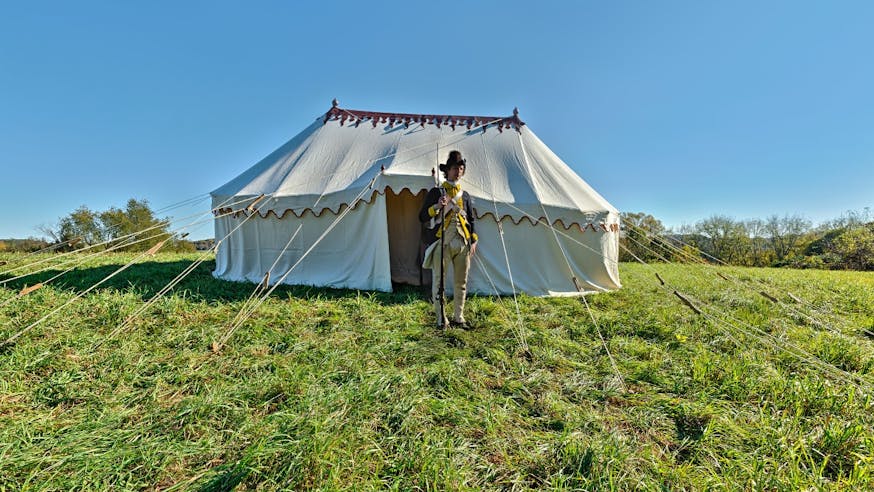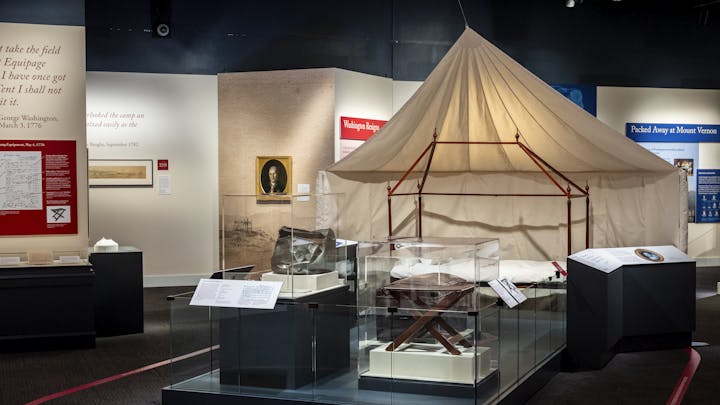Read the Revolution
Witness to Revolution Exhibit Reading List
April 24, 2024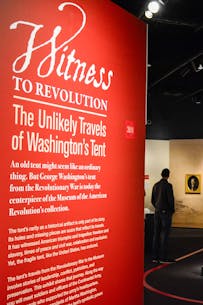
Purchase more exciting, thought-provoking books on the American Revolution from the Museum Shop.
The Museum’s current special exhibition, Witness to Revolution: The Unlikely Travels of Washington’s Tent, open through Jan. 5, 2025, shares the journey of General George Washington’s headquarters tent from the Revolutionary War through its survival during the Civil War to its current home at the Museum. Countless hours of research go into bringing a 5,000-square-foot exhibit to life, and we’re often asked what we’re reading to make it all happen.
See five books recommended by the Museum that explore key people connected to Washington’s tent and were critical to researching and constructing the exhibition.
Reading List
"The Only Unavoidable Subject of Regret": George Washington, Slavery, and the Enslaved Community at Mount Vernon by Mary V. Thompson
“[George Washington’s views on slavery] seem to have changed during the American Revolution, a time when he had to realize the hypocrisy of fighting for liberty and freedom, while holding other people in life-long bondage,” Mary V. Thompson said in an interview with Mount Vernon about the book. “It was also during the war that he traveled away from home and lived for years in colonies/states which were “societies with slaves,” as opposed to “slave societies,” in which slavery was practiced on a large scale and was the basis of the economy. In these other parts of the country, he could see agriculture being successfully carried out by hired white workers, rather than slaves. Washington also headed an integrated army and could see African-born and African-American people doing a fine job as soldiers. And he came in contact with ardent young abolitionists, whose opinion he valued: men like Alexander Hamilton; John Laurens; and the Marquis de Lafayette.”
Purchase the book from University of Virginia Press.
First Family: George Washington’s Heirs and the Making of America by Cassandra A. Good
Excerpt: While George [Washington] supported many of his nephews and nieces, his closest emotional bonds were with Martha’s grandchildren. They, especially Nelly and Wash, spent the most time living with him, hearing his stories, and experiencing life as the nation’s first “first family.” Martha prioritized keeping the family together, bringing the children with them as the capital city moved from New York to Philadelphia. The public visibility all four siblings [Martha Parke Custis, Elizabeth Parke Custis, Eleanor “Nelly” Parke Custis and George Washington “Wash” Parke Custis] gained during the presidency cemented their role as George’s family early on in their lives. None of George’s blood-related family members ever had this kind of close access and public recognition. After the George Washington’s death, the Custises and the Washington nieces and nephews continued on diverging paths. While a Washington nephew inherited Mount Vernon, the house was an image an empty shell when he moved in; all the Washington furniture, china, clothing, and other household objects that quickly attained the status of relics ended up in the Custis grandchildren’s hands. The grandchildren, then, had both the family stories and belongings that could keep George’s memory and legacy alive. They chose to use those strategically at every step. (pg. 22-23)
Purchase the book from Harper Collins.
The Property of the Nation: George Washington’s Tomb, Mount Vernon, and the Memory of the First President by Matthew R. Costello
Excerpt: The visit that excited the most interest was not the one Lafayette made to New York, Boston, Philadelphia, or any other major city, but the one to George Washington's tomb at Mount Vernon. Determined to pay his respects, on October 17, 1824, Lafayette boarded the steamboat Petersburg with his entourage. Washington's relatives received him on the shores of the Potomac River. Lafayette's secretary, Auguste Levasseur, chronicled their visit to the tomb: "Simple and modest as he was during life, the tomb of the citizen hero is scarcely perceived amid the somber cypresses by which it is surrounded," he wrote. As they approached the vault, the door was opened, and Lafayette descended into the tomb alone. He emerged several minutes later "with his eyes overflowing with tears." He then took his son, George Washington de Lafayette, and Levasseur into the tomb where they "knelt reverentially, near his coffin, which [they] respectfully saluted with [their] lips.” Overwhelmed with emotion, the three men embraced each other and left the tomb to receive gifts from George Washington Parke Custis, Washington's step-grandson. Custis gave Lafayette a gold ring that contained a lock of George Washington's hair, along with a Masonic sash and medal that formerly belonged to his step-grandfather. Lafayette “divided the sash and distributed [it] to the youths who were present," giving them each a "memento of their departed hero." The pilgrimage complete, Lafayette left Mount Vernon for his next destination, a commemorative celebration of the surrender of Yorktown. Newspapers and periodicals dispersed the news of Lafayette's visit to the tomb of Washington, and it quickly became one of the most reported events during his time in the United States. (pg. 160-162)
Purchase the book from Kansas University Press.
Sign Up
Get biweekly Read the Revolution featured excerpts right to your inbox.
The Politics of Mourning: Death and Honor in Arlington National Cemetery by Micki McElya
Excerpt: Although Harry Gray’s story anchors many accounts of the family’s passage from slavery to freedom, it is his mother, Selina Gray, who holds the more significant place in histories of the Arlington Estate. Herself born into slavery there around 1826, Selina became one of its primary housekeepers and a personal maid to [George Washington Parke] Custis’s daughter and [Robert E.] Lee’s wife, Mary. While mentioned with some frequency in the many letters written by members of the Custis and Lee families, Selina Gray assumed a central role in the history of the plantation and the mythology surrounding General Lee when she was left with the keys to the house as Mary fled south just before federal troops occupied Arlington in the early days of the Civil War.
The fame of both Selina's owners and the place where she was enslaved has rendered her history both more and less knowable to us today. The archives of the Custis and Lee families have been carefully saved and tended over the years, making it possible to find evidence of the people they owned, particularly those who worked in and around the big house and had closest contacts with individual family members. At the same time, those impressions come through the eyes, ears, and pens of slave owners, committed to their own needs and beliefs in their superior humanity compared to those they held in bondage. More often, the enslaved appear throughout the documents of plantation management, slave owning, and generational wealth – inventories, insurance applications, invoices, wills-documents that list people as things and that can only hint at the humanity of those enumerated within them.
By the time Selina Gray's descendants posed before the big house, Arlington had assumed its current status as the preeminent national cemetery in the United States. But this photo, like the columned mansion its subjects pose before, reminds us that it was first a plantation built by enslaved people. The landscape and all its uses was – and continues to be – defined by this fact. Officially, the "Custis-Lee Estate" was a moment to the Grays' former owners and a national memorial to Robert E. Lee. Yet Selina and her descendants represent an alternative narrative of ownership, legacy, and national heritage.
Mary Lee's quest for the return of her plantation and belongings dominated her thoughts and her days until her death in 1873, fueled by grief after Robert died in Lexington in 1870. She grew increasingly obsessed, hounding acquaintances, friends, relatives, and at least one former slave for information about the whereabouts of and assistance in retrieving her possessions. Surely wearying for all involved, Mary's determination also produced a most remarkable historical document in a four-page letter written by Selina Gray to her former owner in November 1872. Responding to yet another request from Mary for information about furnishings left behind in 1861, Selina's letter is testament to the intricacies, intimacies, and horrors of relationships produced in slavery and their persistence in freedom. In Selina's reporting of the news of her family and other former slaves, in her description of the plantation's postwar uses, in her kind words for the Lee children, and in the inclusion of a pressed rosebud and greenery from the grave of Mary Lee's mother, we can read both care and resistance. There is an emotional depth to those connections between the women, born of closeness, coercion, and violence. The letter is Selina Gray's declaration of emancipation and self-possession. It tells of a relationship between the former owner and the formerly owned forever changed. It is the quiet revolution a self and family claimed and free. (pg. 13-14)
Purchase the book from Harvard University Press. See the letter mentioned in this excerpt on display in Witness to Revolution!
Valley Forge: Making and Remaking a National Symbol by Lorett Treese
Excerpt: Dr. Burk was the first to use a museum-style collection of objects in the interpretation of the Valley Forge experience. Burk's father had collected Indian relics, and as a boy Burk himself had roamed the fields of local farmers to see what their plows might unearth. He had long been gathering artifacts associated with Washington and the Revolutionary War, and these were first displayed in 1908 at an "Exhibition of American Wars" sponsored by the Valley Forge DAR. The collection also included an item that continues to be one of the treasures of Valley Forge: the check presented by the U.S. Congress to the Marquis de Lafayette in partial payment for his services during the American Revolution.
Burk opened a museum to house his collection, which was officially dedicated in 1909 and, like Burk's church, was only partially completed at the time. In 1908, Burk's building committee had erected a portion of the chapel complex that would be incorporated into Patriot's Hall, the proposed meeting place for patriotic and historical societies. This second, half-completed steel and concrete structure provided Burk with a room approximately 28 feet by 24 feet in which he could house his precious relics. "The cases were such as I could beg or buy," he wrote, "the relics were few, but as I have already said were of great value." Burk filled in the empty spaces with flags and decorative bunting. Burk had a vision of what his museum might become, and it was not going to be a small, local museum. He considered Valley Forge the turning point in America's history and therefore believed that his collections should be the basis for interpretation of all of America's history to date.
[...]
Burk was probably proudest of another object he personally obtained for Valley Forge. Mary J. B. Chew of Philadelphia mentioned that it might be possible to acquire Washington's marquee—his personal campaign tent. The tent had been passed along by Washington's descendants in the Custis family and the Lee family. It had been seized at the Lee estate known as Arlington during the Civil War, but President McKinley had restored it to the Lee family. Burk immediately reasoned that no matter where Washington had knelt in the snow at Valley Forge, he had certainly made his personal devotions in the privacy of his tent. If patriots revered the pews that great men had occupied in churches, they should also revere Washington's marquee. (chapter 5)
Purchase the book from Penn State University Press or read for free online courtesy of Valley Forge National Historical Park.
Tags
Learn More
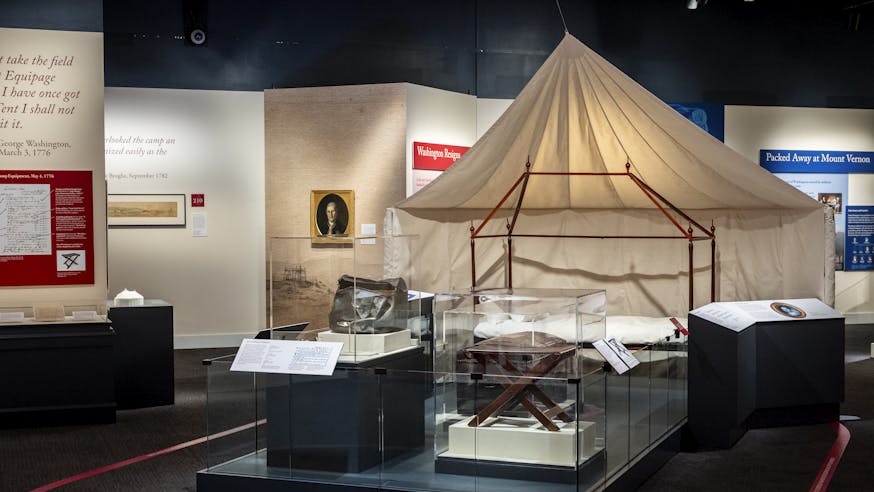
Witness to Revolution: The Unlikely Travels of Washington's Tent
Now Open Through January 5, 2025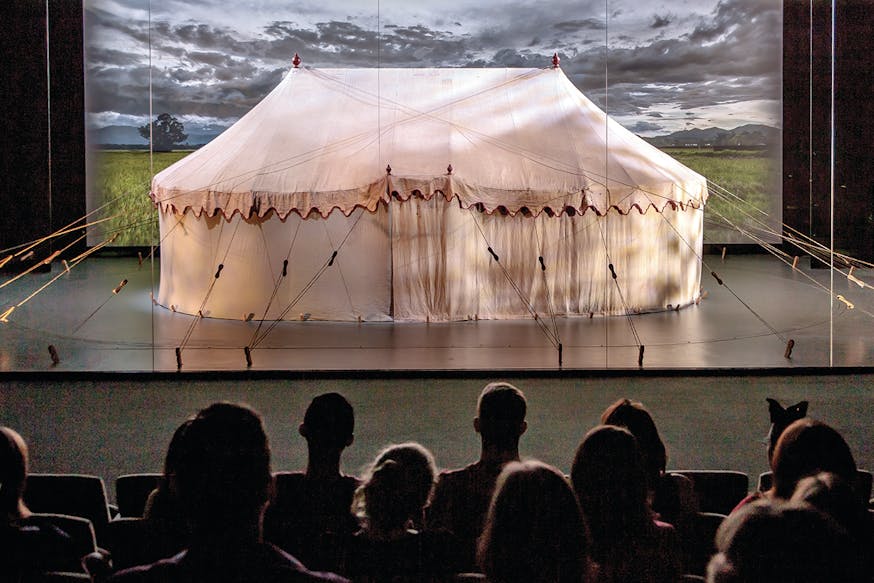
Washington's War Tents
